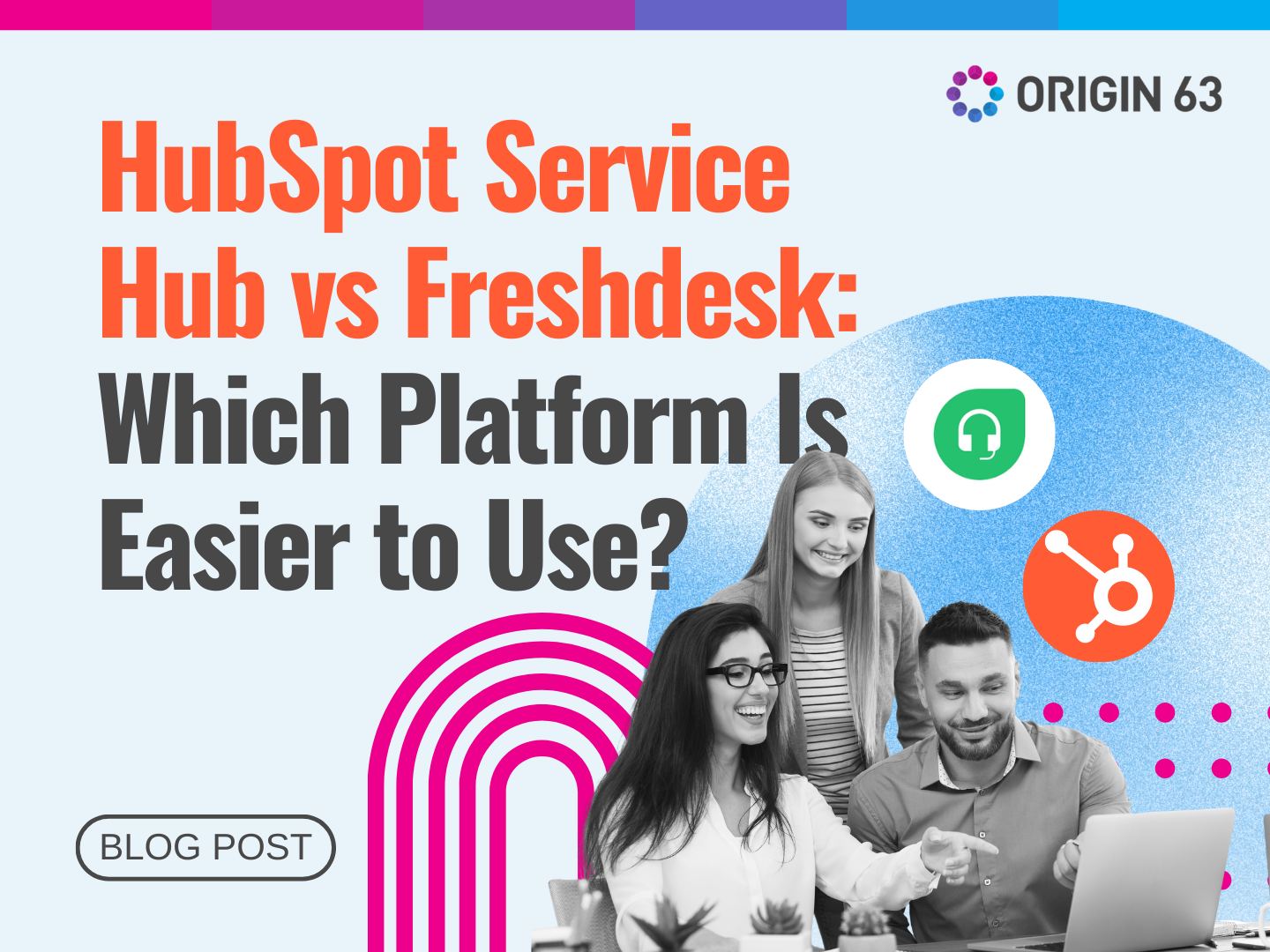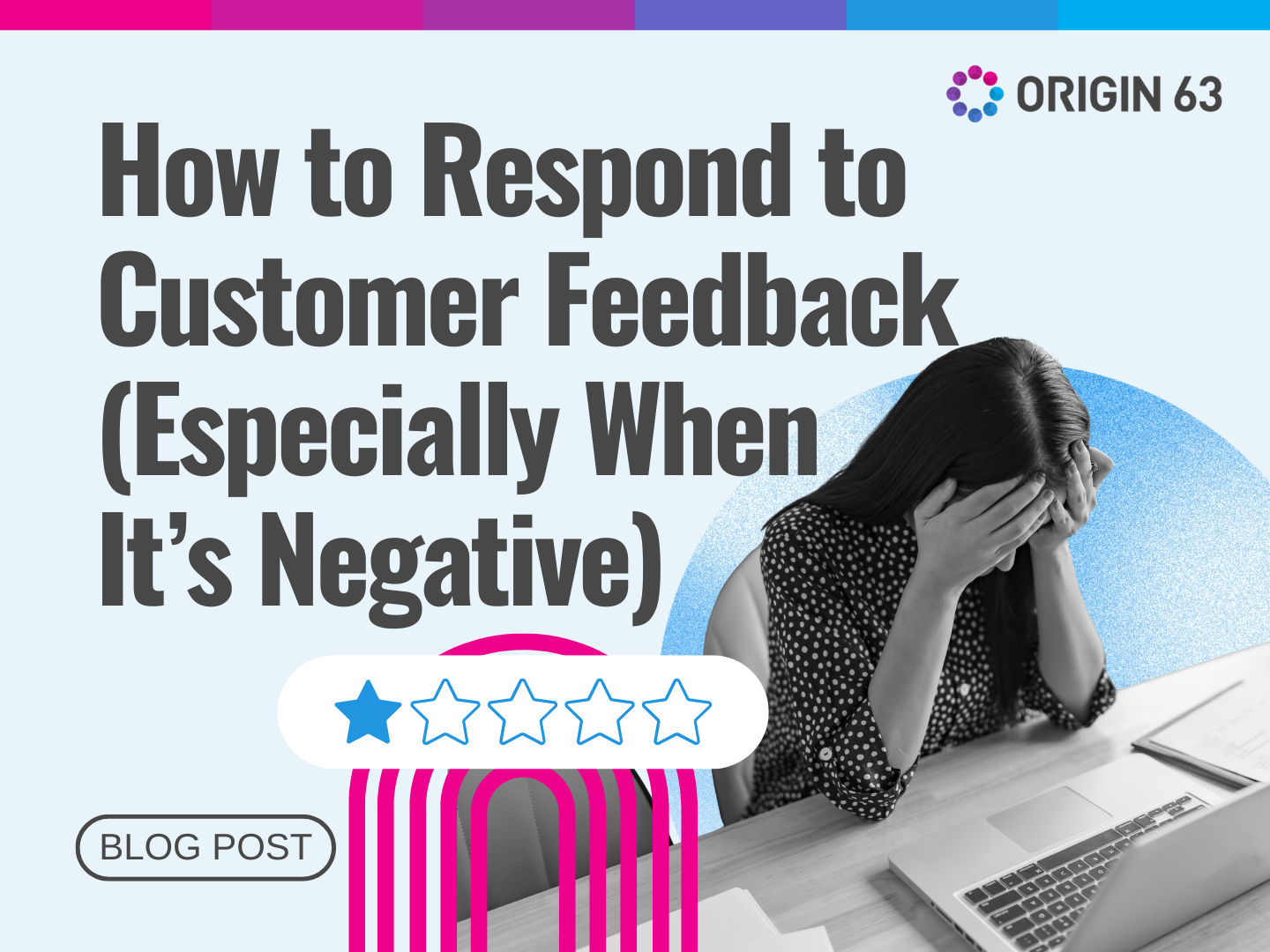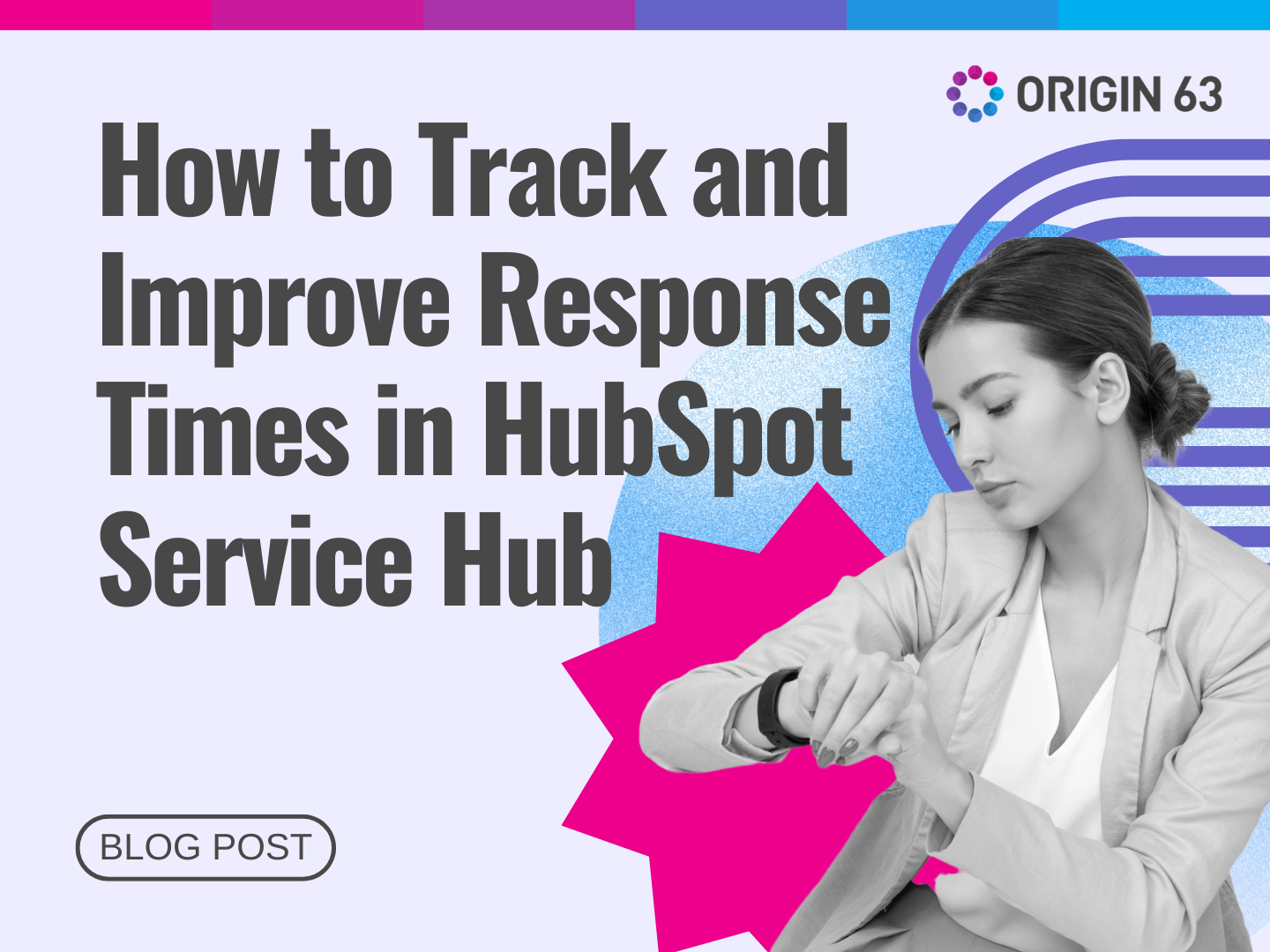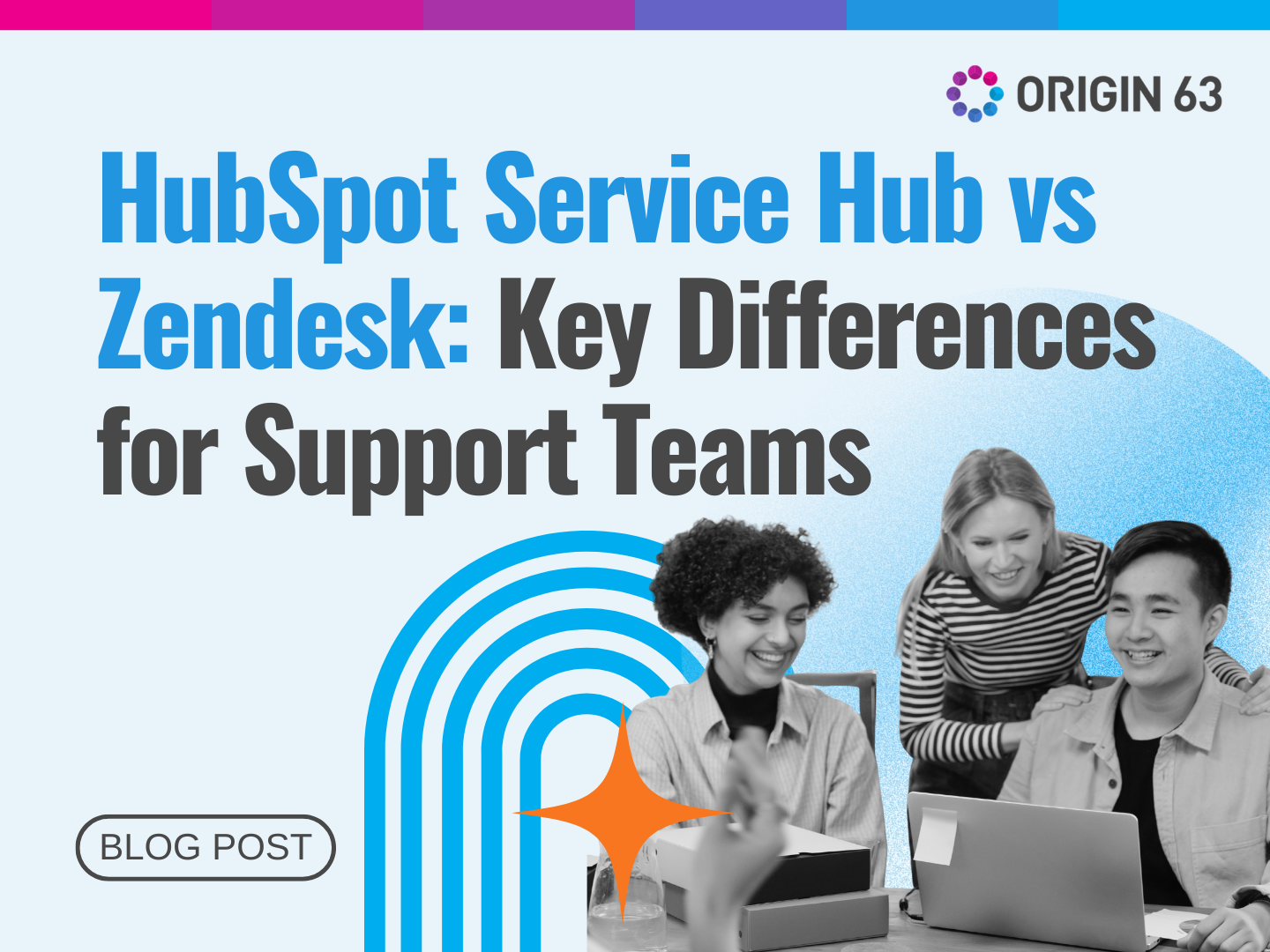Losing a customer is never just about one bad experience. It's usually a series of small warning signs that no one notices in time. Maybe they stopped logging in as often, or support tickets started piling up, or renewal conversations felt awkward.
Customer health scores help you catch these signals early. HubSpot's Service Hub makes it easy to build health scores that fit your business and use them to drive retention, spot upsell opportunities, and keep your team focused on the right priorities.
This blog will explain what customer health scores are, why they matter, and how HubSpot helps you set them up to protect revenue and grow stronger customer relationships.
What Is a Customer Health Score in HubSpot?

A customer health score is a number that shows how well a customer is doing with your product or service. It pulls together data from sources like product usage, support tickets, survey responses, and engagement activity into a single score your team can act on.
In HubSpot's Customer Success Workspace, you can open a dashboard and instantly see who needs help, who's thriving, and who might be ready for an upsell.
HubSpot lets you customize health scores based on what matters most to your business, and they update automatically as new data comes in.
For example, if a customer's login frequency drops or they submit multiple support tickets, their health score goes down, giving your team a heads-up to reach out before things get worse.
Why Are Health Scores Important in Customer Success?
Health scores give you a way to be proactive instead of reactive. Without them, customer success teams often work in the dark. They might focus on whoever emails them most recently or spend time on accounts that don't actually need help.
Health scores change that by showing you exactly where to focus your energy. Here's why they matter:
1. Spot Problems Early
Customer churn rarely happens overnight. It's usually the result of warning signs that went unnoticed. Health scores help you catch those signals before they turn into bigger issues.
For example, if a customer's score drops because they haven't used a core feature in weeks, your team can reach out with training resources or check-in calls to get them back on track. This kind of early intervention can be the difference between keeping a customer and losing them.
The impact of retention is massive. A 5% increase in customer retention can boost revenue from 25% to 95%, showing just how valuable it is to keep customers satisfied and engaged.
2. Identify Your Best Customers
Health scores aren't just for finding problems. They also help you spot your most loyal, high-value customers. These are the accounts that are thriving with your product and might be ready for an upgrade, expansion, or case study opportunity.
Loyal customers are worth the attention. They spend 31% more than new customers and provide the highest quality leads, according to 66% of salespeople.
On average, 65% of a company's revenue comes from approximately 8% of its most loyal customers, which makes it clear why identifying and nurturing these relationships is so important.
You can prioritize outreach to customers who are most likely to expand their accounts or become advocates for your brand.
3. Keep Your Team Focused

Customer success reps often have too many accounts to manage and not enough time. Health scores help them prioritize by showing which customers need attention right now and which ones are doing fine on their own.
This kind of clarity reduces burnout and makes daily work feel more manageable. Instead of facing an endless queue of tasks, reps can focus on the accounts where their effort will make the biggest difference.
How Does HubSpot Calculate Customer Health?
HubSpot gives you full control over how health scores are calculated. Instead of forcing you to use a one-size-fits-all formula, it lets you build scores based on the metrics that actually matter to your business.
Here's how it works:
1. Define Your Metrics
Start by deciding what signals show whether a customer is healthy or at risk. Common metrics include product usage frequency, support ticket volume, survey scores like NPS or CSAT, and engagement with marketing or customer success content.
For example, a SaaS company might track how often customers log in, how many projects they've created, and whether they've completed onboarding tasks. A service-based business might focus more on meeting attendance, contract renewals, and feedback scores.
2. Set Up Calculation Criteria
Once you've chosen your metrics, you can assign point values to different behaviors or outcomes. For example, logging in daily might add points to the score, while submitting multiple support tickets in a week might subtract points.
HubSpot lets you weigh these factors so the most important signals have the biggest impact. If product adoption is your top priority, you can make that metric count for more than others.
3. Automate Score Updates

Health scores in HubSpot update automatically as new data comes in. That means your team doesn't have to manually calculate scores or worry about working with outdated information.
Every time a customer logs in, submits a ticket, or fills out a survey, their health score adjusts in real time.
This automation saves time and ensures your team is always looking at the latest picture of customer health.
4. Use Segments and Thresholds
HubSpot also lets you create segments based on health score ranges. For example, you might label customers with scores above 80 as "Healthy," scores between 50 and 79 as "At Risk," and scores below 50 as "Critical."
These segments make it easier to prioritize outreach and assign the right tasks to your team. A customer in the "Critical" range might need an urgent check-in call, while someone in the "Healthy" range might be a good candidate for an upsell conversation.
What Does a Health Score Tell You?
A health score tells you more than just a number. It gives you a clear snapshot of how each customer is doing and what actions your team should take next.
Here's what health scores can reveal:
1. Engagement Levels
Health scores show how actively customers are using your product or service. Low engagement often means a customer isn't seeing value, which puts them at risk of churn. High engagement, on the other hand, signals satisfaction and loyalty.
2. Support Needs
If a customer's score drops because of frequent support tickets, it's a sign they're struggling. Your team can step in with extra help, training, or escalations to resolve the issue before it impacts the relationship.
3. Upsell Opportunities
High health scores often mean customers are getting great results and might be ready to expand. These are the accounts where your team can focus on growth conversations instead of damage control.
4. Renewal Risk
For subscription-based businesses, health scores help you predict which customers are likely to renew and which ones might leave. This gives you time to address concerns and improve the renewal experience.
How HubSpot Service Hub Helps You Act on Health Scores

Building health scores is only the first step. The real value comes from using them to drive action across your team. HubSpot's Customer Success Workspace makes this easy by connecting health scores to workflows, reporting, and collaboration tools.
Manage Your Entire Book of Business
HubSpot gives customer success reps a single view of their accounts, complete with health scores, recent activity, and upcoming tasks. This makes it easy to see which customers need attention and what actions to take.
Native integrations with tools like Jira and Slack keep product feedback loops and team coordination seamless. Multi-language support ensures global teams can manage customers in their preferred language, making it easier to scale relationships across markets.
Get Deeper Insights to Reduce Churn
With health scores and product usage data in one place, your team can spot trends and act on them fast. For example, if you notice a group of customers showing similar warning signs, you can address the root cause instead of handling each case individually.
API integrations allow custom connections to your tech stack, while multi-language reporting keeps global teams aligned on customer health metrics. This proactive approach helps you reduce churn before it impacts your bottom line.
Define Your Customer Success Metrics
HubSpot lets you build health scores that reflect what success looks like for your business. Whether you're tracking company-wide health or individual product adoption, you get comprehensive views that go beyond standard metrics.
Advanced analytics and custom reporting, available in Professional and Enterprise Service Hub tiers, help you understand success patterns across different regions and languages. You can spot opportunities earlier and reduce churn risk by identifying potential issues before they become major problems.
Prioritize Your Daily Customer Outreach
Instead of facing an endless queue of tasks, your reps get a prioritized view of what matters most. Integrated workflow automation connects with your existing tools, while multi-language task prioritization ensures global accounts receive appropriate attention.
In a single view, reps get the context they need to determine their daily tasks and make the biggest impact on customer success.
Why Customer Health Scores Matter for Your Business
Customer health scores aren't just a nice-to-have feature. They're a critical tool for protecting revenue, improving retention, and building stronger customer relationships.
You can catch problems early, celebrate wins with your best customers, and make smarter decisions about where to invest your time.
The impact on your business can be significant, especially when you consider that even small improvements in retention can lead to massive revenue gains.
HubSpot's Customer Success Workspace makes it easy to build, track, and act on health scores so your team can focus on what they do best: helping customers succeed.
Work With Origin 63 to Get the Most Out of HubSpot
Setting up customer health scores is just the beginning. To get the most value, you need a strategy that fits your business and a team that knows how to use HubSpot's tools effectively.
Origin 63 helps businesses implement HubSpot Service Hub the right way. We'll work with you to define the right metrics, build health scores that match your goals, and train your team to use them every day.
Talk to Origin 63 today and start using customer health scores to protect revenue and build lasting relationships.














.png?width=90&height=90&name=Arrows%20Partner%20Badge-test%20(1).png)

